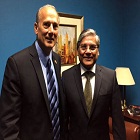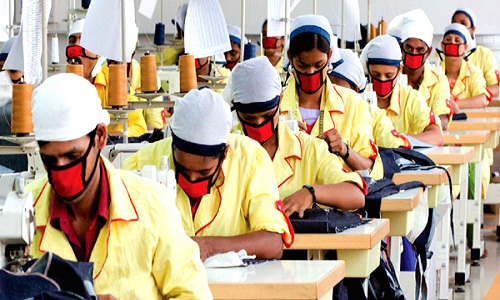"Since 2013, Bangladesh does not have the facility of Generalised System of Preference (GSP) which was suspended by the US after two devastating accidents. With the Export Promotion Bureau (EPB) projecting Bangladesh’s garment exports to hit $28.09 billion in the FY2015-16 with 10.21 per cent growth, it is being hoped that the US would change its stance on GSP for Bangladesh."

Since 2013, Bangladesh does not have the facility of Generalised System of Preference (GSP) which was suspended by the US after two devastating accidents. With the Export Promotion Bureau (EPB) projecting Bangladesh’s garment exports to hit $28.09 billion in the FY2015-16 with 10.21 per cent growth, it is being hoped that the US would change its stance on GSP for Bangladesh.

The United States offers GSP to provide duty-free entry into the US market for nearly 5,000 products from 122 countries. Except Bangladesh, all members of South Asian Association for Regional Cooperation (SAARC) are eligible for GSP. Bangladesh lost out when the readymade garment (RMG) sector hit headlines because of Rana Plaza factory building collapse and the Tazreen Fashions fire that killed more than 1,200 workers. However, the US GSP scheme does not cover Bangladesh’s RMG sector, and that’s why the US action did not directly affect export of RMG to the American markets.
Bangladesh’s exports compete with China
In recent years, Bangladesh’s export percentage to the US has been dropping. In 2015, it earned $5.40 billion as compared to $4.83 billion in the previous year. The same year, the US started importing clothing products worth $85.16 bilion from across the globe. Bangladesh’s share was 6.34 per cent, China’s 35.86 per cent and Vietnam’s 12.40 per cent in terms of value. So, when Vietnam can benefit from the GSP, Bangladesh too can do so.
Working towards bringing Bangladesh back
Even as US buyers cut prices, triggering great concern for Bangladeshi exporters, US Republican presidential candidate Donald Trump has spoken in favour of Bangladesh garments. He has said that the quality of shirts from there is good. Bangladesh offers ease of doing business while import-export is faster. Research and Development (R&D) on new styles is faster as one can import fabrics in three days as compared to India where it takes 10 days. It is being hoped that the US would change its stand on GSP for Bangladesh. Also, Bangladesh should improve political understanding with the US, bring in lobbyists and integrate inter-ministerial coordination efforts. It should also boost bargaining power and improve economic diplomacy.
The US had introduced GSP to promote exports of low income countries to industrialised ones in order to support their economic growth and development. However, Bangladesh did not benefit from it in the last 37 years before it was suspended.
Bangladesh exports tobacco, apparels, sporting equipment, porcelain china, plastic products and a small quantity of textile products. According to the US Trade Representative (USTR), China secured top position in exporting RMG to the US with $30 billion in 2015 while Vietnam earned $10.5 billion. India exported apparel items worth $3.6 billion with 7.78 per cent growth than the previous year’s export earnings. Bangladesh is the third largest exporter of clothing products to the US.












